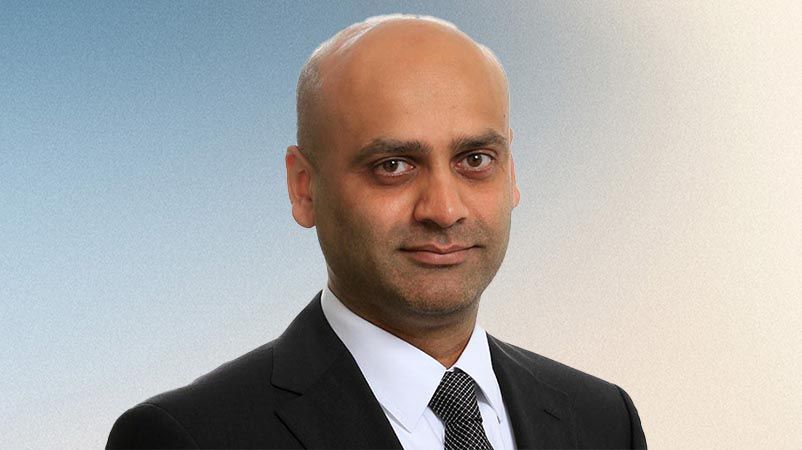The invasion of Ukraine in 2022 has been a catalyst for the debate on whether the defence industry should be part of the investible universe for sustainable investors, with the subsequent volatile geopolitical landscape leading to calls from politicians for greater investment by investors of all hues.
Global defence spending hit a record high of nearly $2.5trn in 2024 and is set to rise significantly for the rest of the decade, with Western governments greenlighting a greater percentage of GDP to defence expenditure. The significant rally in defence stocks has only fuelled the debate on whether it is now time to remove the often blanket exclusion on defence for sustainable investors.
See also: Sustainable investment managers battle with defence stocks ‘issue’ as Allianz drops exclusions
Original sin: Excluding defence
The Quaker movement from the 18th century onwards was prominent in excluding investments in armaments, underpinned by an ethical framework which also screened out alcohol, tobacco and gambling. Modern socially responsible investing (SRI) had its watershed moment in the 1970s with the launch of the PAX fund, a direct response to the Vietnam War. The fund was set up in 1971 by the United Methodist Church to avoid direct investments in the supply chains for Agent Orange, a defoliant that was deployed by the US Army for a decade. The impact on the environment and population remains ongoing, which has led to decades of litigation against both the US government and the manufacturers of the chemicals.
Controversial weapons – biological, chemical and nuclear!
The defence industry has continued to innovate and investors are now faced with a landscape that has evolved from conventional weapons to systems that are deemed controversial. The former remains a key part of the industry, but the latter has brought greater challenges for investors. While the use of biological and chemical weapons has seen an international ban by many countries, nuclear weapons are not off limits. The landscape is further complicated by advanced drone technology, which is now both defensive and offensive. In addition, the move from hardware to software, especially with the advances in artificial intelligence, suggests the future of warfare will be very different, much of which is now playing out in conflicts around the world.
Production vs. deployment – Transparency
The lack of transparency remains the biggest red flag for sustainable investors. The production of weapons is led by companies, but the deployment of those weapons is administered by governments and this disconnect makes it difficult for sustainable investors to leverage any influence. The idea that weapons can only be produced and deployed in a specific conflict is naïve at best, in a world where the international arms trade services the highest bidder with little or no regard to the morals and ethics of the buyer or where the weapons will be deployed. The deployment of weapons results in widespread environmental, social and economic damage, estimated at $14trn annually. The cost in fatalities and population displacement is immeasurable and should weigh heavily on any investor wishing to profit from the sector.
Defence of the realm – Offensive vs. defensive
One of the arguments for investing in defence is centred around national security and protecting freedom. This has come to the forefront during the conflict in Ukraine and there is a legitimate case to be made that every nation has the right to defend itself. There is now a sub-industry within the defence sector where there are businesses that only focus on defensive weaponry. This includes listed companies that produce night vision and thermal imaging equipment for both the defence and security industry, and engineering companies helping improve the performance of military vehicles via gearboxes and supply chains. The issue for sustainable investors is when defensive weaponry technology shifts into offensive mode, and this has become evident in the changing use of drones in conflicts.
See also: US approach to Ukraine changes the ESG conversation for defence once more
Investment universe – Private vs. public markets
The call to support the defence industry has ignored the limited universe for investors, with the majority of businesses not listed on public markets. The industry has several high-profile conglomerates in the Western world, supported by a growing number of smaller specialist businesses which are now listed. The emergence of passive solutions has broadened the investment landscape in recent years, but investing in individual names remains problematic for sustainable investors.
The UK occupies a prominent place in the sector, despite recently allowing the takeovers of Ultra Electronics, Cobham, GKN and private equity circling Chemring. Sustainable investment managers looking to move into the defence sector will have to relax or remove some exclusions. For example, one large European asset manager has recently lifted the exclusions on investing in nuclear weapons activities and employing a 10% revenue rule to get access to the wider defence sector within their sustainable fund range. However, it remains to be seen how many more follow suit or hold the exclusion line.
Financing defence – Government debt and bank financing
The defence landscape is more complex when it comes to government debt and banks involved in providing businesses with access to capital. Sustainable fixed income investors who invest in government debt will have exposure to defence, as a certain percentage of national budgets are allocated to defence (around 2.3% in the UK). The percentage is increasing, which is raising the defence exposure for sustainable investors. It is impossible to separate government debt from its involvement in defence unless specific debt instruments are brought to market with an acceptable supranational wrapper, for example, NATO-certified triple AAA bonds. This harks back to a time when governments raised capital via war bonds. Similarly, banks that provide access to both direct and indirect capital for defence businesses are coming under greater scrutiny, especially when it comes to non-conventional weapons, which now extends to AI and cybersecurity.
Investing in defence – Ethics vs. sustainability
For sustainable investors of all hues, the defence sector throws up a lot of red lines – human rights violations, bribery and corruption, political instability, environmental degradation and contamination, and a material carbon footprint. The issue is one of ethics when it comes to the wider defence sector, and along with gambling, there are very few redeeming features for responsible and sustainable investors to justify a position. Investors who want to support the defence industry are free to direct their capital, but it should not be the case that sustainable investors are accused of not being patriotic by failing to follow suit. The accusation that sustainable funds are starving capital from the defence sector is weak, with the industry having a strong track record of being well-funded, both from private and public coffers.
Investors have little or no influence on the businesses that produce arms, as it remains the only sector where manufacturers cannot sell their products without a government licence. The inability to engage meaningfully with defence companies remains a critical issue, and arguments that investors can engage in the same manner as other sectors are spurious. As we mark the 80th anniversary this year of the end of World War Two and the first (and still only) use of nuclear bombs on Hiroshima and Nagasaki, it is not the mission of sustainable or ethical investors to come to the rescue of the defence industry. There is no simple dilemma, as the red lines were drawn beginning with the Quakers, and these should not be crossed.








